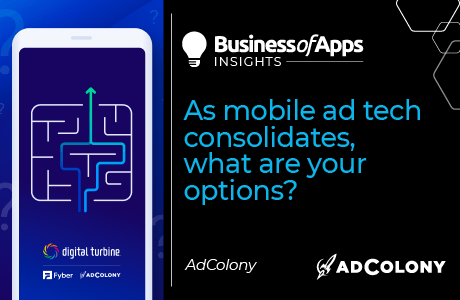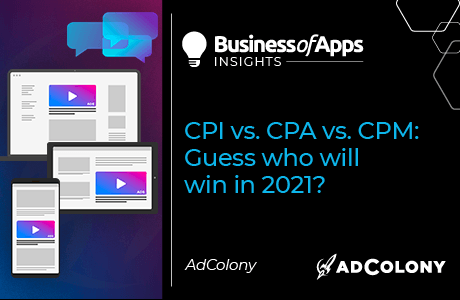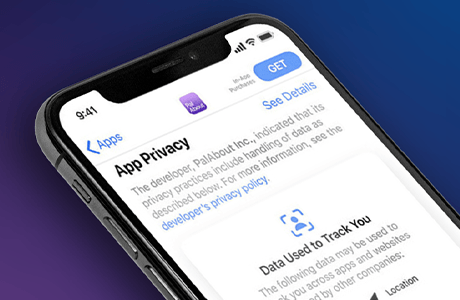In 2019, it was said that hypercasual games were having a moment – but it’s clear that the “moment” has stretched into a longer trend. Mobile users are increasingly looking for low-commitment entertainment they can enjoy in short bursts, and hypercasual games fit that criteria perfectly, with their simple mechanics that offer instant gameplay, and instant gratification. (More on that later.)
Studios jumped on the trend and started producing them by the hundreds, if not thousands. Do a simple search for hypercasual design or performance, and you’ll find troves of information on how to build these types of games to attract and retain users. But you will find little on how to build ads for them that will engage and compel players to action.
That’s because best practices for creative performance moves fast, almost faster than the game itself. These games quickly rise and fall in popularity in the app stores, and they pull in a lot of money. But it’s often short-lived, and before you know it, everyone is doing exactly the same thing.
AdColony has been doing user acquisition since there was an App Store to acquire users for (it’s why we pivoted from making mobile games in the first place), and working on hypercasual has reinvigorated some of our old best practices, on top of introducing some new ones!
Testing ad formats for hypercasual games
As I mentioned, we’ve been doing user acquisition since the App Store started. What is unique to hypercasual is the trends, not only in the games itself, but the ads as well. As soon as you see one style of ad, every other network seems to start copying it. It’s a highly competitive market, and it can feel like you are playing constant catch up, trying to find the right format and design that works. This is why it’s even more important to prioritize testing in this genre. Here are some variables to consider:
- Testing various creative formats. Between short and long form videos, playables, end cards, and everything in between, it is a good idea to mix and match different types of formats. This also helps optimize within the types of available placements as different zones might prefer different ad lengths or experiences.
- Testing where to capture the click. Within a standard video+end card format, the click is usually a CTA at the end. However, there are limitless possibilities on where to place and get that install. It might be more effective as part of a playable experience or during a specific point during the video. Test the standard, but play around with other places the CTA can live.
- Testing based on network data. Checking out the competition helps provide valuable information on what is working for specific titles and styles as well as quickly identify new trends. The data is widely available – don’t be afraid to snoop!
As our product and technology expands, we have greater ability to efficiently serve A/B tests that give us the opportunity to draw insightful conclusions for different ads and genres. Creative is a huge driver of what is successful and what is not. Being able to generate and test multiple formats and styles at once – putting them out there to get a snapshot of the ideal combination – is key. And when we find the winners, we drill down even further, because there is always another layer when it comes to optimizing creative.
Throughout this process, we’re working with publishers to identify goals, assess performance, and adjust strategy. It’s a collaborative process, and a good deal more personal than some alternatives.
But is this a headache for publishers?
Not at all. On the monetization side of the coin, the benefits of it to publishers are massive. First, you’ll notice that since a wide range of creatives have been vetted through our A/B testing technology, this results in a stronger batch of creative being served. They are more filtered and relevant for your audience. Additionally, the optimization of creative ultimately means better results for publishers and advertisers alike, as pricing shifts accordingly to the quality and performance of the ads.
Tapping into a little psychology
The trends and styles may come and go. But there are some behaviors and fundamental principles that optimize the performance of hypercasual games that you can count on:
- Challenging the user. Part of the appeal of hypercasual games is that it provides a challenge, a low barrier to entry, and an invitation to try to succeed at something new. Appealing to emotion is standard for creatives, but appealing to competition is a necessity for hypercasuals. Showing ads that exhibit failure or obvious wrong choices elicits a desire to win. Similarly, watching a progression of gameplay getting harder and harder also entices a viewer to want to try and attempt the challenge. The ideas surrounding sentiments like “I could have made a better choice” or “I would have won” and taps into a basic human need for success in competition.
- Providing positive reinforcement.. Mobile games keep gaining in popularity because, amongst other things, they help people relax, break up the day, and provide entertainment and excitement. If you create an ad that doesn’t just show the game, but allows for a positive connection to be made, perhaps with showcasing the the “thrill” of choosing a correct answer or seeing chaos contained, you’re giving viewers a good reason to download. These little shots of adrenaline help form a little more emotional resonance.
One of the huge benefits of mobile advertising is how fast the data is available to be analyzed. You can essentially cast a wide net with a variety of creatives and be able to quickly see what works where. By harnessing that data and creating various formats of creatives to test, you can take advantage of viewers telling you exactly what they want, and iterating as that changes. As trends change on a weekly basis, testing becomes the key to help creatives adapt.











